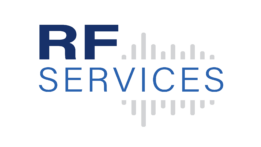
RAN Services
RAN Services
RF Services has a team of engineers with experience in designing, integrating, optimizing, and managing 4G and 5G technologies for macro sites, CRAN nodes, and indoor and outdoor DAS. These cutting-edge solutions offer high-speed, low-latency, and secure wireless connectivity for various applications and use cases. Our engineers can design a custom solution that provides coverage where you need it.

RAN Services
- Design:
- Plan and design the RAN architecture, topology, coverage, capacity, and performance to meet your network requirements and standards.
- Select and configure RAN components, such as antennas, radios, baseband units, and software.
- Deployment:
- Install, test, and commission the RAN equipment and software at the site locations.
- Integrate RAN with the core network and other network elements, such as transport and backhaul.
- Maintenance:
- Monitor, troubleshoot, and repair the RAN equipment and software to ensure their availability and reliability.
- Perform preventive and corrective actions, such as updates, patches, backups, and replacements.
- Optimization: Analyze and improve the RAN performance, quality, and efficiency to meet the network objectives and customer expectations.
-
- Implement changes, such as tuning, reconfiguration, load balancing, and interference management.
-
- Upgrade:
- Enhance and expand the RAN capabilities and features to support new technologies, standards, and services.
- Add or replace the RAN equipment and software to increase the network capacity, coverage, and functionality.
- Competitive Benchmarking
Propagation Model Tuning (RAN)
- Propagation Model tuning can help to improve the accuracy and reliability of wireless network planning and optimization by reducing the prediction errors and ensuring that the coverage and quality of service meet the design requirements.
- There are different methods and tools for propagation model tuning, depending on the type and complexity of the propagation model, the availability and quality of measurement data, and the objectives and constraints of the network design. RF Services uses the following methods and tools:
- Field data collection
- Model tuning software
- Network planning tools
Propagation model tuning is both an art and a science, as it requires not only the proper tools, but also the experience and knowledge to use them effectively. RF Services has the tools and knowledge help to ensure the performance, reliability, and compatibility of wireless networks.
5G
- 5G wireless technology is the latest generation of mobile communication systems that aims to provide faster, more reliable, and more diverse services for various applications. Our team of experts in 5G is composed of highly qualified and experienced engineers, researchers, and consultants who have been working in the field of wireless communication for over 25 years.
- We have extensive knowledge and skills in designing, developing, testing, and deploying 5G systems and solutions for various industries and applications. We are also well-versed in the latest standards, technologies, and trends in 5G.
- RF Services can help you with your 5G projects, such as:
- Conducting feasibility studies and market analysis for 5G use cases and business models
- Developing 5G network architectures and strategies for optimal performance and efficiency
- Implementing 5G network components and devices, such as base stations, antennas, modems, and chipsets
- Evaluating 5G network quality and performance using advanced tools and methods
- Troubleshooting 5G network issues and providing technical support
Small Cell
- Small cell technology is a type of wireless communication system that uses low-powered and small-sized base stations to provide network coverage and capacity in areas where traditional macrocell towers are not sufficient or feasible.
Small cells can:- Improve the quality and speed of data transmission
- Reduce the power consumption
- Reduce environmental impact of wireless networks
Small cells are also essential for enabling 5G technology, which requires higher frequencies and shorter ranges to deliver ultra-fast and low-latency services.
Some of the applications of small cell technology that RF Services has completed:
- Enhanced indoor and outdoor coverage in urban areas, where buildings and other obstacles can interfere with the signal from macrocell towers.
- Provided wireless access in rural areas, where deploying macrocell towers can be costly and challenging.
- Supported high-density scenarios, such as stadiums, airports, malls, and campuses, where a large number of users and devices can overload the network.
Distributed Antenna Systems (DAS)
Our team of engineers can help you to design and build a DAS System to help improve your voice and data connectivity for end-users. We have completed many of these systems in hospitals, universities and airports.

